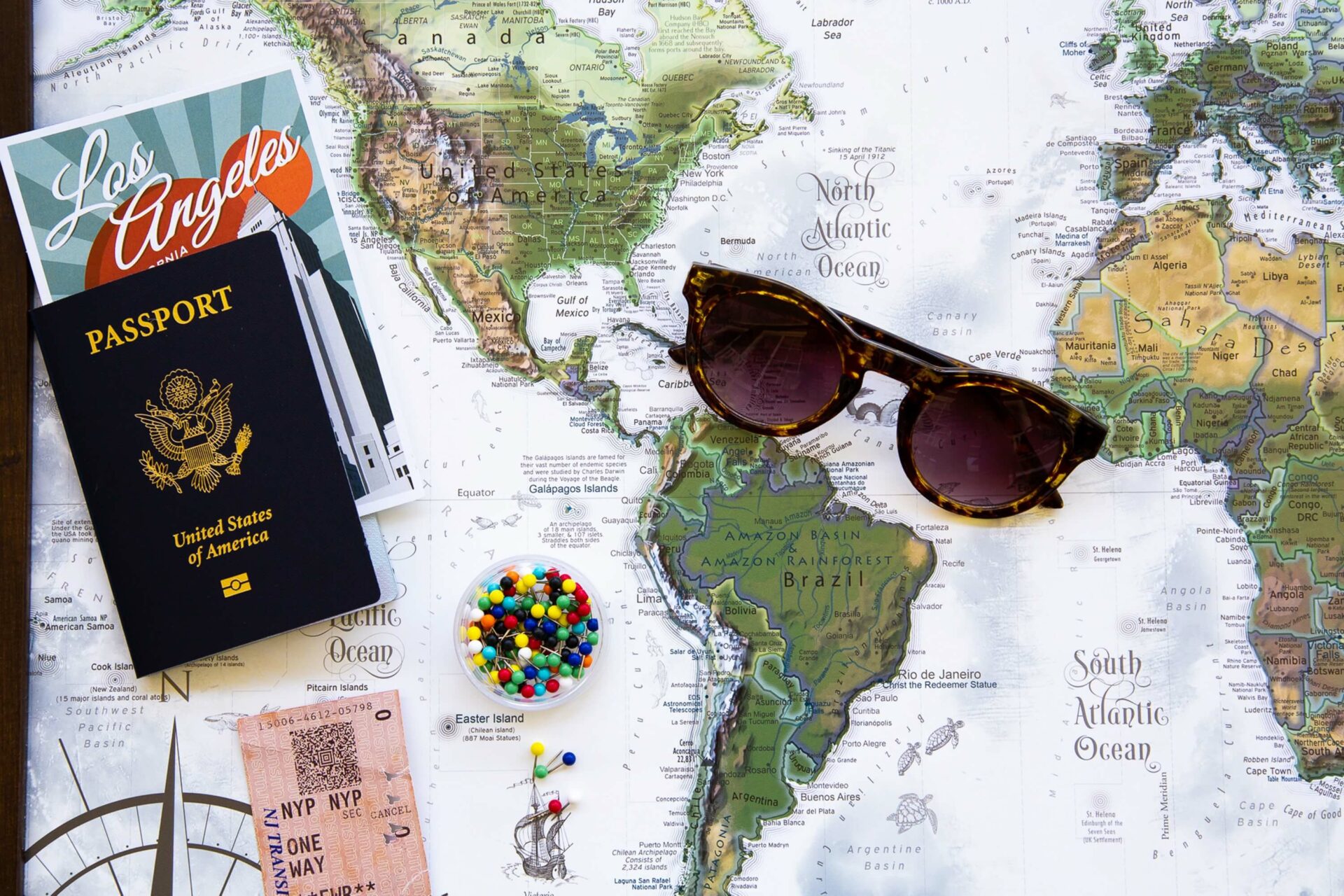
Table of Contents
Chapter 1
Introduction
Each year, a large number of international students apply to study full-time at US colleges. But in order to attend college in the US, you need more than just stellar grades—you also need a student visa. Unfortunately, getting a visa can be a difficult procedure, which is why we’re here to assist.
The fundamentals of visas and how to obtain a student visa for the United States will be covered in this article.
Chapter 2
List of Documents
Let’s briefly review the specific elements you need in order before we go over how to register for a student visa.
#1: Passport
Every international student is required to have a current passport that was issued by their home nation. Additionally, this passport must be valid for at least another six months after the conclusion of your program in the US. Therefore, you cannot use a passport that will expire during your time in the US or soon after your program is over. You must instead apply for a new passport and utilize that one.
#2: Passport-Style Photograph
You must provide a current (within the last six months) passport-style photo with your registration. You will later attach and submit this with your online visa application as your visa photo.
Specific instructions regarding how to take and submit a visa photo are provided on the US visas website, along with examples of acceptable and prohibited photos. Please be informed that since November 2016, eyeglasses are not permitted in visa photos.
#3: Money
Last but not least, you’ll need to have enough cash on hand to cover the numerous visa-related expenses. Later, we’ll go into greater detail about these fees and how to pay them. However, for a quick overview, the costs for a US student visa are as follows:
- I-901 SEVIS fee: For F-1/M-1 students, this fee is $350, while J-1 students must pay 220 USD. This cost must be covered by all applicants.
- Visa application fee: It’s $160
- Visa issuance fee (if required): Only candidates of a select few nationalities are obliged to pay this fee. Visit the US Visas website to find out if you need to pay a visa issuance fee.
Chapter 3
How to Apply for Student US VISA?
Apply to a SEVP-approved institution
Choose a school and course that are recognized by the Student and Exchange Visitor Program of the US government if you are an international student (SEVP).
Accreditation is crucial because it guarantees that your degree will be accepted by other colleges, organizations for professionals, companies, and governmental agencies all across the world. The paperwork required to submit an application for a US student visa is only available to students enrolled in institutions that have received SEVP approval. Use the government’s Study in the States webpage to locate approved universities.
The US does not, in contrast to numerous other countries, have a centralized system for managing university applications. Therefore, you must submit multiple applications to each institution you are intrigued by.
You must meet the admissions requirements of each university, and you often must also show that you have the necessary financial resources.
When you are accepted by a university, the institution will enroll you in the SEVIS program and issue you either a Form DS-2019 or a Form I-20, depending on whether you are eligible for an F, M, or J visa.
Foreign students with F and M visa classifications are managed by the SEVP, but international students with J visa classifications and exchange visitor programs are handled by the Department of State (DoS). To manage and oversee institutions, exchange visitor programs, and international students, SEVP and DoS employ SEVIS.
Pay the SEVIS fee
At least three days before filing an application for a US visa, you must pay the SEVIS fee. To pay the fee, you must fill out a paper or online form. Both are accessible through the US Immigration and Customs Enforcement (ICE) SEVP site. The necessary information must be provided exactly as it shows on your DS-2019 or I-20 application.
The I-901 cost is currently $200 USD for F/M visa holders and $180 USD for J student visa holders. J visa holders who are working as au pairs, camp counselors, or in summer work/travel pay $35 instead of this.
The website provides instructions for a variety of payment methods, such as Western Union Quick Pay, checks, international money orders, and debit or credit cards. After paying the charge, you can visit the website again to see if your payment was received. A third party may also cover the fee on your behalf. The third party must give you a receipt if the amount is paid on your behalf.
You can obtain and print proof of payment from the website whenever you like after completing your purchase. This confirmation will be required at your US student visa interview as confirmation of fee payment.
Complete a US student visa application
You can schedule an appointment with a US consulate or embassy in your nation to apply for a US student visa after receiving your SEVIS form and paying the SEVIS fee. Regardless of when your program is scheduled to begin, it is best to apply as early as possible because visa processing times can change. Your visa may be granted up to 120 days before your scheduled arrival in the US.
The majority of nations have their own specific websites for everything related to applying for a US student visa, which can be reached from this home page. If your country is not listed, you may still be able to locate the US embassy or consulate in your nation by utilizing the site of the US embassy.
Pay the visa application fee
The Machine Readable Visa Fee is another name for the visa application fee. Please carefully study the instructions provided on the website for your consulate as there may be variances in the fee payment procedures.
When completing your research, you may come across the phrase “visa issuance fee contingent on reciprocity,” but don’t worry—this does not apply to anyone applying for M1, M2, F1, F2, J1, and J2 visas.
When you arrive at your scheduled visa interview, you will be required to present the MRV fee receipt. If they are enrolled in a US Agency for International Development (USAID) program or a federally supported educational and cultural exchange program with a program serial number starting G-1, G-2, G-3, or G-7, some J visa applicants won’t be required to pay application processing costs.
Arrange and show up for a US student visa interview.
The final step in acquiring a student visa for the United States is scheduling and appearing for a visa interview. By contacting the American consulate or embassy that is most accessible for you, either online or over call, you can do this. You should always pay the MRV fee first because you might be asked for your MRV fee number.
Before the visa application process is complete, you must appear for an interview with a consular officer. If you need to schedule an appointment for your interview at a different US embassy or consulate than the one you used to file your visa form, don’t be concerned. The code on your DS-160 can be used to access your information at any US embassy or consulate. Nevertheless, be aware that it may be difficult to be accepted if you apply for a visa outside of your country of residence. Location, season, and visa type all affect how long applicants must wait for appointments for visa interviews.
The consular inspector will inquire about your past and ambitions during the visa interview to determine whether you are qualified for a US student visa and, if so, which visa type is appropriate for you. Be ready to discuss your ties to your native country, your proficiency in English, your academic background, the US program you have been accepted to, and documentation of your financial means. You can also be questioned about your post-study objectives.
After your interview, the consular officer will let you know if your application requires further administrative steps, which could cause a delay in the issuance of your visa. The length of the wait varies by nation. You will be told when, how, and how to deliver your passport with the visa. In some nations, the courier service will email you with a tracking id so you may follow the progress of the shipment of your passport.
Chapter 4
What to do after the rejection?
The majority of US visa applications are approved, based on the website for US visas. But occasionally, a visa for a foreign student may be refused. Normally, this only occurs if you don’t meet a prerequisite before or during your interview.
Here are a few issues that could prevent you from obtaining a student visa for the US:
- You don’t offer evidence that you have enough money. According to reports, this is one of the key causes of the frequent denial of student visas in the United States. Although you are not required to have enough money to last you the full program, you should be able to show that you have enough money (in liquid assets) to cover at least one academic year.
- When your program is over, you don’t show evidence that you intend to leave the country. The US government must guarantee that you won’t unintentionally or on purpose overstay your visa. Therefore, you must present sufficient evidence of your intention to return to your home nation after your program is through.
- You fail the security inspection. Although it may seem obvious, you may not be able to obtain a US visa if you have committed certain crimes.
- You don’t have everything you need for the interview. A visa application could be turned down if you forget to bring certain items, like your passport, receipts, and official paperwork linked to your visa.
- You don’t appear for the interview. Your visa application can be turned down if you arrive late for your interview or don’t show up at all.
- It’s too late to apply for a student visa to the US. If you apply for your visa too soon before your program begins, you’ll probably be denied a student visa.
This overview covers several grounds for the denial of US visas to foreign students. Your embassy will inform you whether your request for a student visa is denied and why. Unfortunately, if you are rejected, you cannot get your money back. Additionally, embassies do not reconsider visa requests, so if your application is denied, you must go through the procedure all over again in order to reapply for a student visa.
Finally, refusals of visa applications are uncommon. You should have no trouble getting a US student visa as long as you take care of everything you need to and do according to the instructions we’ve provided!
Chapter 5
Conclusion
You can study in the US without a student VISA. You must get a student VISA first before getting into your dream college. Make sure you start putting together your application for a US student visa well in advance – at minimum, three to five months before your program is scheduled to begin. Applying for a student visa in the US often involves a number of processes.










